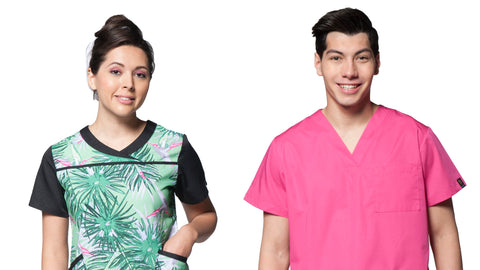By Josephine Reid
Overall, nursing salaries vary depending on a number of factors: level of nursing degree and nursing education, years of experience in a chosen field, state and city where you work (cost of living), the type of work you do, and the type of specialty you pursue.
Licensed practical nurses typically train for their careers through a year-long education program at a hospital, community college or vocational school. After graduation, candidates must pass the National Council Licensure Examination (NCLEX-PN) to earn their nursing licensure.
According to the U.S. Bureau of Labor Statistics’ current Occupational Outlook Handbook, the median national annual salary for licensed practical and licensed vocational nurses is $44,090. Actual salaries may vary greatly based on specialization within the field, location, years of experience and a variety of other factors.
To become a registered nurse, students must earn a two-year associate’s or 4-year bachelor’s degree in nursing or complete a nursing diploma program. After earning their degree, candidates must pass the NCLEX-RN exam to obtain their registered nursing license.
According to the U.S. Bureau of Labor Statistics’ current Occupational Outlook Handbook, the median national annual salary for registered nurses is $68,450. Actual salaries may vary greatly based on specialization within the field, location, years of experience and a variety of other factors.
Advanced Practice Nurses hold a master’s degree in a particular focus area and provide one-on-one patient care services similar to those a physician would perform. The following statistics show annual nurse salary ranges for the different categories of advanced practice nursing careers.
The average Licensed Vocational Nurse in the United States can expect to rake in roughly $21.14 per hour. While geography and experience level impact pays for this group, the specific employer is the most influential factor. For the most part, Licensed Vocational Nurses enjoy their work and report high levels of job satisfaction. Licensed Vocational Nurses who responded to the questionnaire are largely women, dominating at 90 percent. Unfortunately, some people in this line of work are without benefits — about a third lack coverage. On the flip side, the greater part has medical insurance and a little more than half receive dental plans.
Patient Load Expectancy
RN
“I'm still orienting but I take on about 5-6 patients. Normally we will have 6-7 sometimes 8. I work in NYC. What are the ratios in other states or hospitals? 7 patients is crazy! Granted, not all are super sick, but still, time management is one of the top skills needed, perhaps the hardest for a new nurse.” - germsjackson
“3-5 patients is typical at my Level I trauma center ... even urgent care assignments are generally no more than 5 unless it's a very bad day.” -Altra, BSN, RNLPN
There has not been as much research on the patient load on the LPN/LVN side; besides how the lack of LPN's has effected RN's loads. However, there are three main staffing models that most facilities follow to determine how staffing is dispersed.
The three main models of nurse staffing are:
- Budget Based, in which nursing staff is allocated according to nursing hours per patient day
- Nurse-Patient Ratio, in which the number of nurses per number of patients or patient days determines staffing levels
- Patient Acuity, in which patient characteristics are used to determine a shift’s staffing needs
I'm Josephine Reid and I work at Dressamed.com headquarters in Los Angeles. I have a B.S. in Retail Merchandising and Business from the University of Wisconsin-Stout. I like to keep a beautiful balance of a creativity and business mindset.

